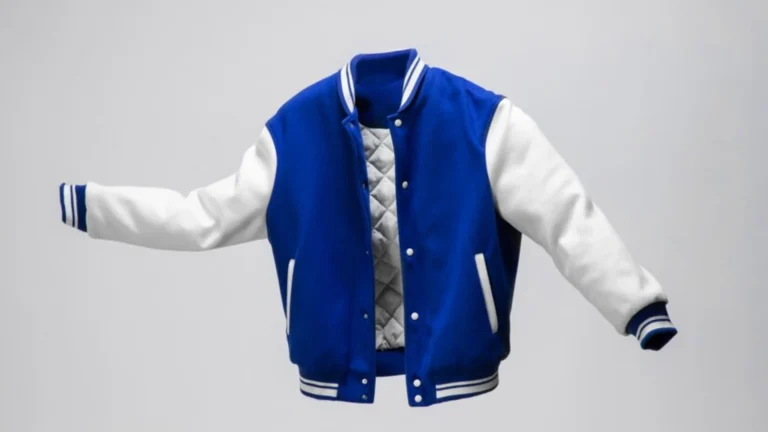Gambesons have a rich history in the world of armor and protection, serving as a fundamental piece of clothing for warriors throughout the ages. This article delves into the intricate history, various types, and diverse uses of gambesons, providing a comprehensive understanding of their significance in both historical and modern contexts.
ALSO READ: Unlocking The Yeder Veyst Meaning: A Guide To Yiddish Wisdom
What Is A Gambeson?
A gambeson is a padded defensive garment worn beneath armor. Historically made of quilted fabric, it served as a buffer against the impacts of blows from swords and other weapons. Gambesons were commonly worn by knights and soldiers in the Middle Ages, providing both comfort and protection. They can be likened to modern-day padded jackets, but their role in warfare was far more critical.
A Brief History Of Gambesons
Origins in the Middle Ages
The gambeson can trace its origins back to the early Middle Ages, around the 10th century. Initially, it was made of linen or wool, filled with cotton or animal hair. This padding offered both warmth and protection, making it a vital garment for those engaged in battle.
Evolution Through the Centuries
As armor technology advanced, so did the design of gambesons. By the 14th century, they had evolved into a more structured form, featuring additional layers of padding and often made from thicker materials. This evolution allowed for better protection against more powerful weaponry, such as crossbows and early firearms.
Usage in Different Cultures
While primarily associated with European knights, gambesons were also used in various forms across different cultures. In the Byzantine Empire, for example, a similar padded garment known as a “pteryge” was used. The Mongols and other nomadic tribes also utilized similar protective garments, showcasing the gambeson’s adaptability and importance in various combat scenarios.
Types of Gambesons
Gambesons are not a one-size-fits-all garment; they come in various forms, each suited to specific purposes and historical periods.
Standard Gambeson
The standard gambeson is a simple, padded coat that covers the torso and often extends to the hips. It typically features a front closure with laces or buttons and is made from multiple layers of fabric.
Sleeved Gambeson
The sleeved gambeson includes additional padding for the arms, providing further protection. This design became more popular in the late Middle Ages as arm-mounted weaponry evolved.
Short Gambeson
Short gambesons extend only to the waist, making them ideal for lighter armor setups. They were favored by foot soldiers and archers who required mobility without sacrificing too much protection.
Long Gambeson
Conversely, long gambesons cover the entire body down to the thighs or knees. These garments were typically worn by knights and heavy infantry, providing maximum protection while still allowing for some mobility.
Specialized Gambesons
Some gambesons were tailored for specific purposes, such as those worn by jousters or mounted knights. These specialized versions often featured additional reinforcements in vulnerable areas.
Uses Of Gambesons
Historical Uses
The primary use of gambesons was as protective clothing in battle. They absorbed the shock of strikes, preventing bruising and injury. Moreover, they provided insulation in colder climates, ensuring that soldiers remained warm while wearing heavy armor.
Modern Reenactment and LARPing
Today, gambesons are popular in historical reenactments and live-action role-playing (LARP) events. Participants wear them for authenticity, combining them with other period-appropriate garments and armor.
Historical Martial Arts
In historical martial arts communities, gambesons are often used as protective gear during sparring. Their padded nature offers a good balance between safety and mobility, allowing practitioners to train effectively without risking injury.
Film and Theater
Costume designers frequently use gambesons in films and theater productions set in medieval times. Their distinctive look and historical significance make them a staple in representing the era accurately.
Care And Maintenance Of Gambesons
To ensure the longevity of a gambeson, proper care is essential.
Cleaning
Most gambesons can be machine washed on a gentle cycle, but it’s important to check the care label first. If the gambeson is made from delicate fabrics or has intricate designs, hand washing may be a safer option.
Storage
When not in use, gambesons should be stored in a cool, dry place, ideally in a breathable garment bag to prevent moisture buildup and mold growth.
Repair
Small tears or damages can often be repaired with basic sewing skills. For more significant repairs, it may be worth consulting a professional tailor experienced in historical garments.
Conclusion
Gambesons represent a fascinating blend of history, functionality, and craftsmanship. From their origins as protective garments in medieval warfare to their modern applications in reenactments and martial arts, gambesons have stood the test of time. Whether you are a history enthusiast, a martial arts practitioner, or a costume designer, understanding the significance and variety of gambesons can enrich your appreciation for this remarkable piece of history.
ALSO READ: Vladislava Gagan: Innovator And Influencer In [Industry/Field]
FAQs
What is a gambeson?
A gambeson is a padded protective garment worn under armor, historically used by knights and soldiers to absorb impacts and provide warmth during battles.
How did gambesons evolve over time?
Gambesons evolved from simple padded garments to more structured designs with additional layers of protection, adapting to advancements in weaponry and combat techniques.
Are gambesons still used today?
Yes, gambesons are still used today in historical reenactments, live-action role-playing (LARP), and historical martial arts for training and protection.
What materials are gambesons made from?
Gambesons were traditionally made from linen or wool and filled with cotton or animal hair. Modern versions may use synthetic materials for improved durability and comfort.
How should I care for a gambeson?
Gambesons can often be machine washed on a gentle cycle or hand washed if made from delicate fabrics. They should be stored in a cool, dry place and repaired as needed to maintain their condition.

